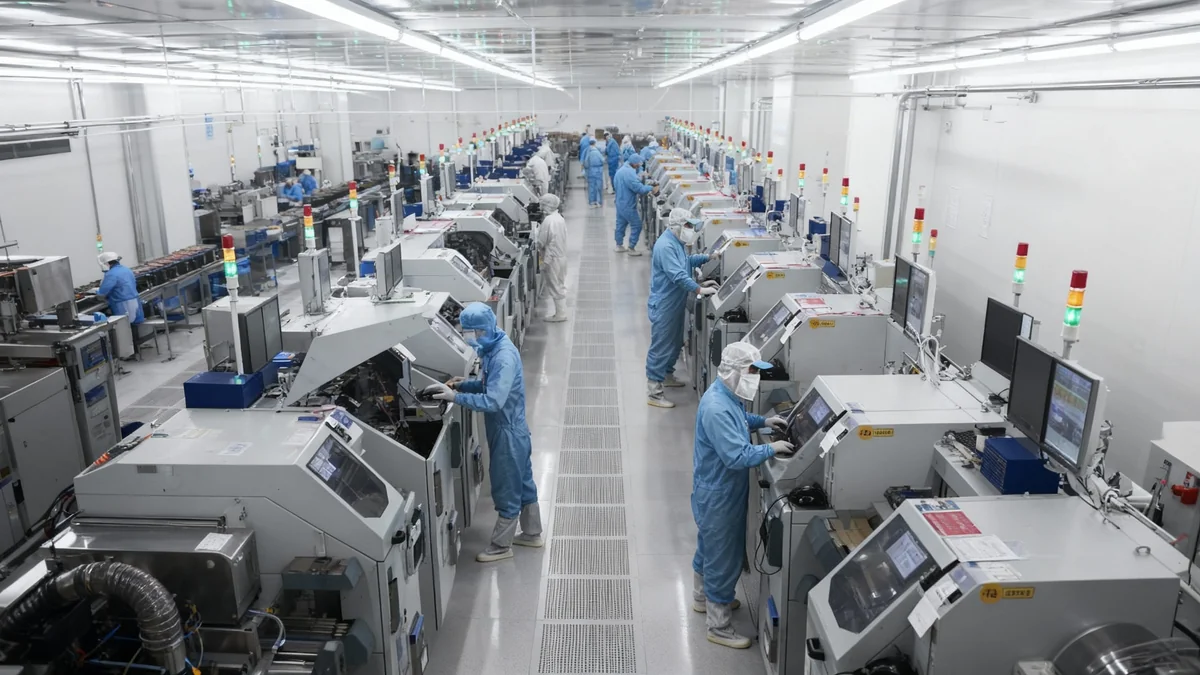Major technology corporations are establishing significant control over the artificial intelligence industry through a strategy of vertical integration. By owning critical infrastructure from semiconductor chips to cloud computing platforms and investing heavily in leading AI model developers, a handful of companies now influence nearly every stage of AI development and deployment. This consolidation has prompted growing concerns among market analysts and regulators about competition, innovation, and conflicts of interest.
A reported $100 billion investment by Nvidia into OpenAI highlights the scale of these strategic alliances. This move, along with substantial investments by Microsoft, Amazon, and Google into AI startups like OpenAI and Anthropic, is creating an ecosystem where the same few firms act as suppliers, investors, and competitors, raising questions about fair market access for independent companies.
Key Takeaways
- Major tech companies are vertically integrating the AI market, controlling chips, cloud services, and AI models.
- Nvidia, Microsoft, Amazon, and Google are central to this consolidation through investments and infrastructure ownership.
- This structure creates potential conflicts of interest, as these companies can be suppliers, investors, and competitors to smaller startups.
- Regulators are examining these relationships, citing historical precedents for intervention in essential infrastructure industries.
The Structure of AI Market Consolidation
The current AI landscape is dominated by a few key players who control essential layers of the technology stack. This structure begins with the hardware required to train and run complex AI models.
Nvidia holds a commanding position in the market for graphics processing units (GPUs), the specialized chips essential for AI computations. Its hardware has become the industry standard, giving the company significant influence over the entire AI supply chain.
Understanding the AI Stack
The AI technology stack refers to the different layers of technology required to build and deploy AI applications. It typically includes:
- Hardware: Specialized chips like GPUs and TPUs.
- Cloud Infrastructure: Data centers and computing services where models are trained and hosted.
- Foundational Models: Large-scale AI models like those from OpenAI and Anthropic.
- Applications: The final products and services that use the AI models.
Moving up the stack, the cloud computing sector is similarly concentrated. According to market analysis, Amazon Web Services (AWS), Microsoft Azure, and Google Cloud collectively control approximately two-thirds of the global cloud market. These platforms, known as hyperscalers, provide the massive computational power needed to train large language models.
This means that most AI developers, from small startups to large enterprises, depend on the infrastructure provided by these three companies. While cloud computing offers a utility-like service, the providers are not regulated like traditional utilities, allowing them to set terms and prioritize resource allocation.
Strategic Investments Cement Control
The final layer of integration involves direct financial ties between the infrastructure owners and the top AI model developers. What once appeared to be a competitive field of AI startups is now closely linked with the tech giants.
Microsoft is a primary investor in OpenAI, integrating its models deeply into products like Bing and Office 365. Similarly, Anthropic has received major investments from both Amazon and Google. These relationships, often termed "partnerships," function as strategic alliances that secure access to cutting-edge AI models for the hyperscalers while providing essential funding and computing resources for the AI labs.
Over 66% of the global cloud infrastructure market is controlled by Amazon, Microsoft, and Google. These companies are also the primary investors in the leading AI model developers, OpenAI and Anthropic.
This cross-ownership blurs the lines between competition and collaboration. An independent AI startup must often rely on a cloud provider that is simultaneously funding its chief competitor, creating what many analysts describe as an uneven playing field.
A Familiar Pattern of Tech Consolidation
Critics argue that the strategies being used in the AI sector mirror historical patterns of consolidation by big tech companies to secure market dominance. Over the past two decades, acquisitions and strategic investments have been used to neutralize potential rivals and control key technology sectors.
Notable historical examples include:
- Facebook's acquisition of Instagram to eliminate a growing competitor in social media.
- Google's purchase of DoubleClick, which solidified its dominance in the online advertising market.
- Microsoft's actions in the 1990s to bundle Internet Explorer with Windows, which led to the decline of Netscape Navigator.
- Amazon's use of marketplace data to develop and promote its own products, directly competing with third-party sellers on its platform.
These past events form the basis for current regulatory concerns. The fear is that the AI ecosystem is being constructed in a way that inherently favors the incumbent tech giants, potentially stifling the next wave of innovation from independent startups that cannot compete with the vast resources and integrated infrastructure of their larger rivals.
"When the same few companies own the entire tech stack, they stop competing and start colluding. This creates unavoidable and intolerable conflicts of interest that poison the competitive dynamics that healthy markets require."
Regulatory Scrutiny and Calls for Intervention
The increasing integration within the AI industry has not gone unnoticed by regulators. Government bodies in the United States and Europe are actively investigating the relationships between cloud providers and AI companies.
The Federal Trade Commission (FTC) has reportedly found evidence that cloud providers have prioritized the allocation of scarce GPUs to AI companies in which they have a financial stake, disadvantaging independent startups. This type of preferential treatment is at the heart of antitrust concerns.
Proponents of regulatory action point to historical precedents where the U.S. government intervened to break up vertically integrated monopolies that controlled essential infrastructure. A century ago, laws were passed to force railroad companies to divest from the coal mines they owned to prevent them from giving preferential shipping rates to their own operations.
Later, telecommunications laws required dominant carriers to allow competitors to interconnect with their networks. Similarly, banking and commerce were structurally separated to prevent conflicts of interest. Advocates for intervention argue that AI infrastructure, like railroads and telecom networks, is becoming an essential utility for the modern economy and requires similar oversight.
The Debate Over Future Innovation
The debate over how to handle the growing AI oligopoly is complex. The major tech companies argue that their massive investments are necessary to fund the expensive research and development required for AI breakthroughs. They contend that these partnerships accelerate innovation and bring powerful new technologies to the market faster than would otherwise be possible.
However, critics counter that this structure stifles true innovation by making it nearly impossible for new entrants to succeed. If the future of AI is determined by a handful of firms that control every part of the ecosystem, they argue, the market will be defined not by the best new ideas but by the strategic interests of the incumbents.
Without action, some analysts believe the most significant applications of AI will simply reinforce the market power of existing leaders in e-commerce, search, and productivity software. The central question for lawmakers and regulators is whether to allow the current trend of consolidation to continue or to intervene to foster a more open and competitive AI market for the future.





